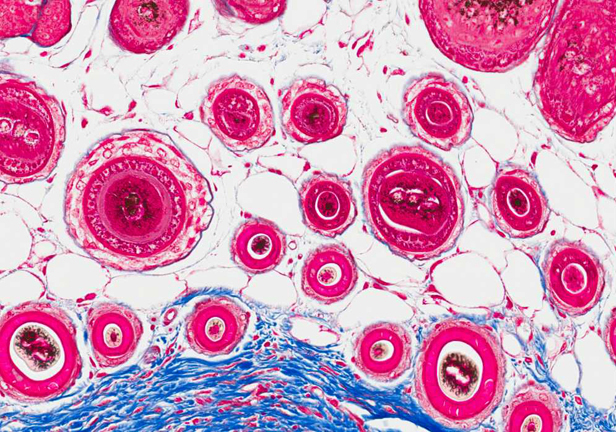Gene Expression & Skin Clearing in Psoriasis

Understanding the intricacies of psoriasis and how therapies act on the disease can help to inform clinicians and their patients as they seek to make important treatment decisions.
As I participate this weekend in the @American Academy of Dermatology virtual meeting, I wanted to share a research experience that aimed to shed some light on one nuanced aspect of psoriasis: the persistence of symptoms.
The Psoriasis Transcriptome
The psoriasis transcriptome refers to the more than 2,300 dysregulated genes whose expression is dysregulated. Ultimately, these genes differentiate healthy skin from symptomatic skin (skin with psoriasis lesions).
Collecting and comparing expression of different types of genes from patients’ tissues can help researchers gain a deeper understanding of how changes in gene activity may reflect or contribute to disease activity.i
Gene Expression and Symptoms Beyond Skin Clearing
In our research, we’ve seen that some patients with completely cleared skin (based on Psoriasis Area and Severity Index [PASI] 100 percent response) still reported experiencing persistent symptoms of their psoriasis.
Interested in why, we analyzed the transcriptomic profiles of these patients. We sought to learn if treatment normalized dysregulated genes, i.e., if skin that cleared became more like skin that had no symptoms at baseline. And just as importantly, if patients with clear skin who continued to report persistent symptoms of psoriasis -- such as itching and burningii -- still had dysregulated genes.

Skin cells at 20x magnification
My Drive to Learn
What I’ve learned is that psoriasis can be difficult to treat. Some patients who experience complete skin clearance after treatment can still feel symptoms and the reason for this can be rooted in the complexities of a patients’ skin gene activity.
The Janssen Immunology Research & Development organization seeks to conduct unique research to deepen our understanding of psoriasis – an immune-mediated disease that can cause more health issues than visible plaques for patients managing the condition. We are committed to raising the bar for how immune-mediated disease is understood and treated.
Such research not only serves to inform our development of medicines that may help to address these more invisible symptoms, it also helps to better inform clinicians who are navigating various treatment options and mechanisms of action that may impart different therapeutic results for patients who live with psoriasis.
i Adams, J. (2008) Transcriptome: connecting the genome to gene function. Nature Education 1(1):195;
https://www.nature.com/scitable/topicpage/transcriptome-connecting-the-genome-to-gene-function-605/
ii Medical News Today. What to know about psoriasis. https://www.medicalnewstoday.com/articles/52457#symptoms.

